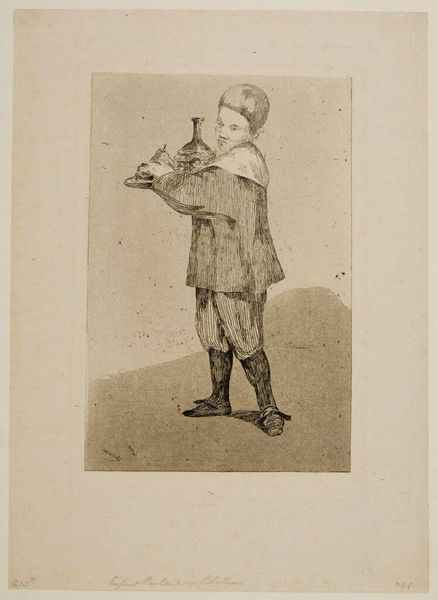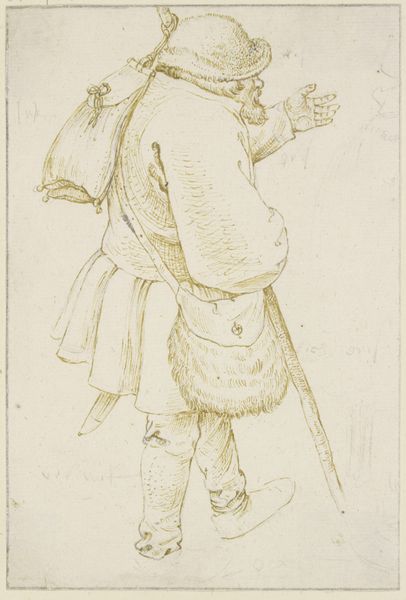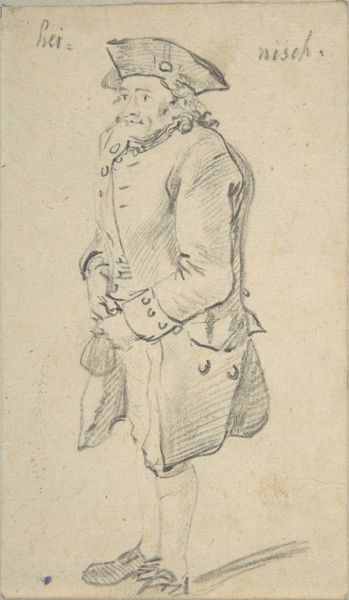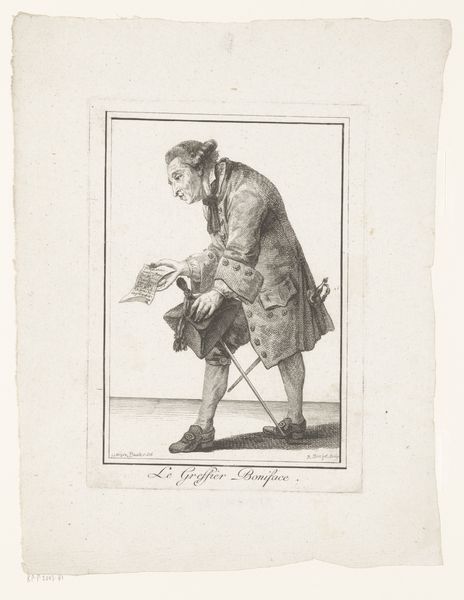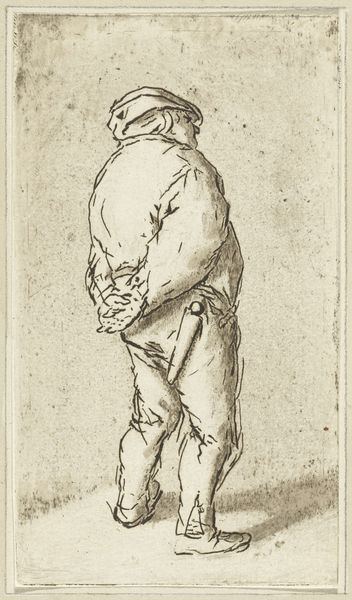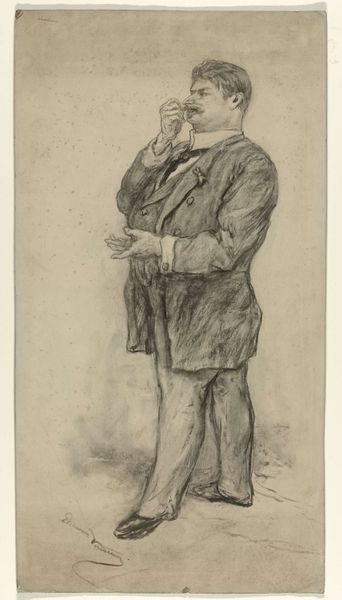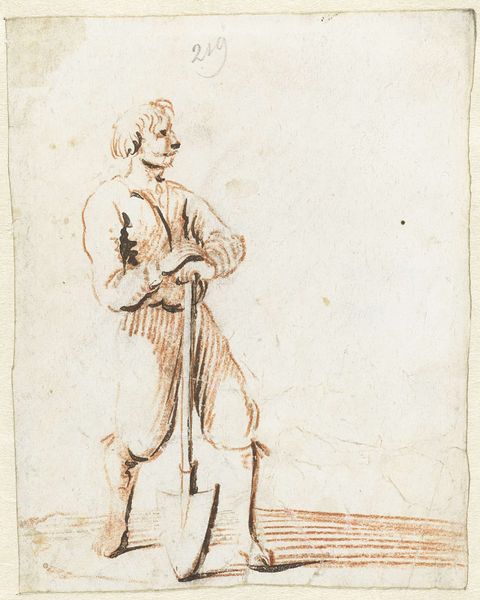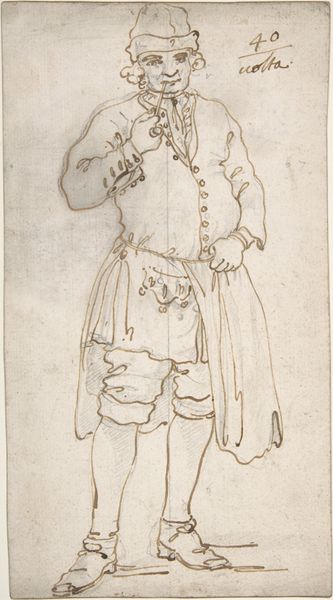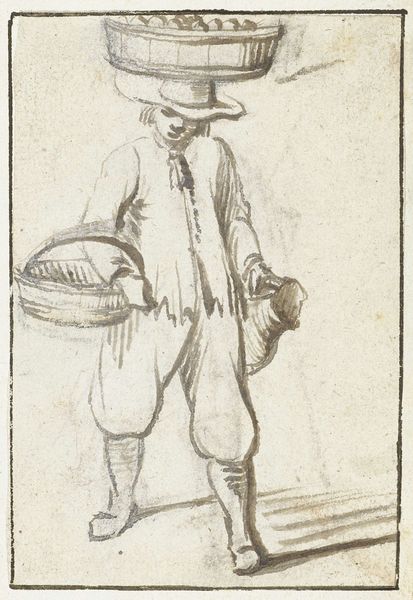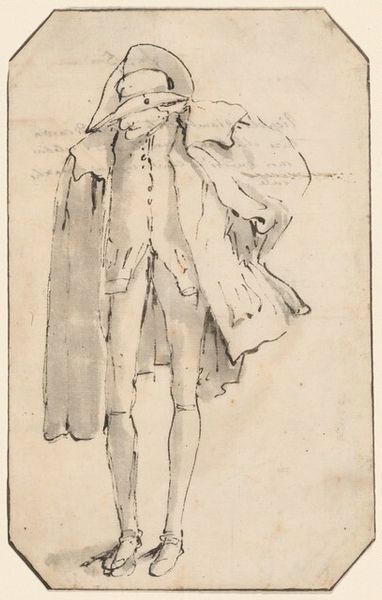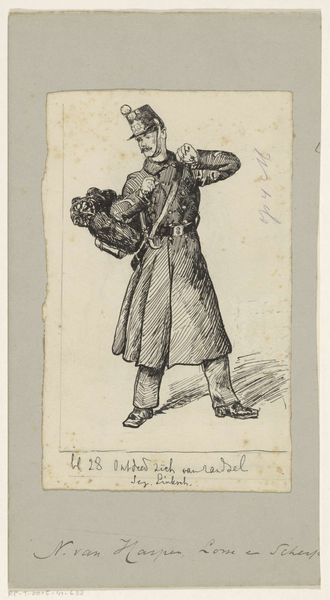
print, etching
#
portrait
# print
#
impressionism
#
etching
#
figuration
#
genre-painting
#
realism
Dimensions: plate: 24.2 x 16 cm (9 1/2 x 6 5/16 in.) sheet: 36.2 x 28.4 cm (14 1/4 x 11 3/16 in.)
Copyright: National Gallery of Art: CC0 1.0
Curator: Manet’s “Child Holding a Tray,” created around 1862, presents us with an intimate glimpse into, perhaps, a domestic scene, through the lens of an etching. It's a beautifully textured print. What's your take when you look at it? Editor: Stark. A certain weariness settles around the eyes, doesn’t it? Despite what looks like rather fancy livery, there’s something in the rendering – the density of lines suggesting the folds of clothing or weight of the object – that hints at a more profound burden. I’m curious, though, about Manet's choice of etching. It doesn’t scream out for painterly detail in the same way his oils do. Curator: Ah, but that's where the magic flickers! He takes a painterly, impressionistic sensibility and funnels it into line and cross-hatch, coaxing depth, shadow, and personality through sheer draftsmanship. You get the feeling he's playing, testing what he can capture through constraint. The boy isn't idealized, there’s this delightful realness to the posture. Editor: Absolutely. It becomes this fascinating collision between luxury and labor. We have this child, who's visibly working – you can practically feel the weight he carries in the tension etched in those arms, even. He exists, presumably, in an ecosystem defined by production and service. His garb becomes less about refinement, and more about his social function in relation to what must be affluent or aristocratic diners. Curator: It makes you wonder about the unspoken stories lurking behind the surface. Is this someone's son caught in a moment of impromptu servitude, or a professional at his practiced task? Manet never truly tells, preferring to present a scene, rather than a clear, concise story. Editor: I agree completely, and I think that ambiguity allows for wider contemplation about class, about children’s roles. There’s such intentionality within this image regarding the boy’s function—especially how labor structures these dynamics—which, for me, transcends a simple portrait. How marvelous! Curator: A small image, yes, but it prompts such vast conversations. Makes one consider what defines a masterpiece, I suppose! Editor: Indeed, this etching certainly sparks profound reflections on artistry, society, and the intricate web of human experiences embedded within everyday objects.
Comments
No comments
Be the first to comment and join the conversation on the ultimate creative platform.
